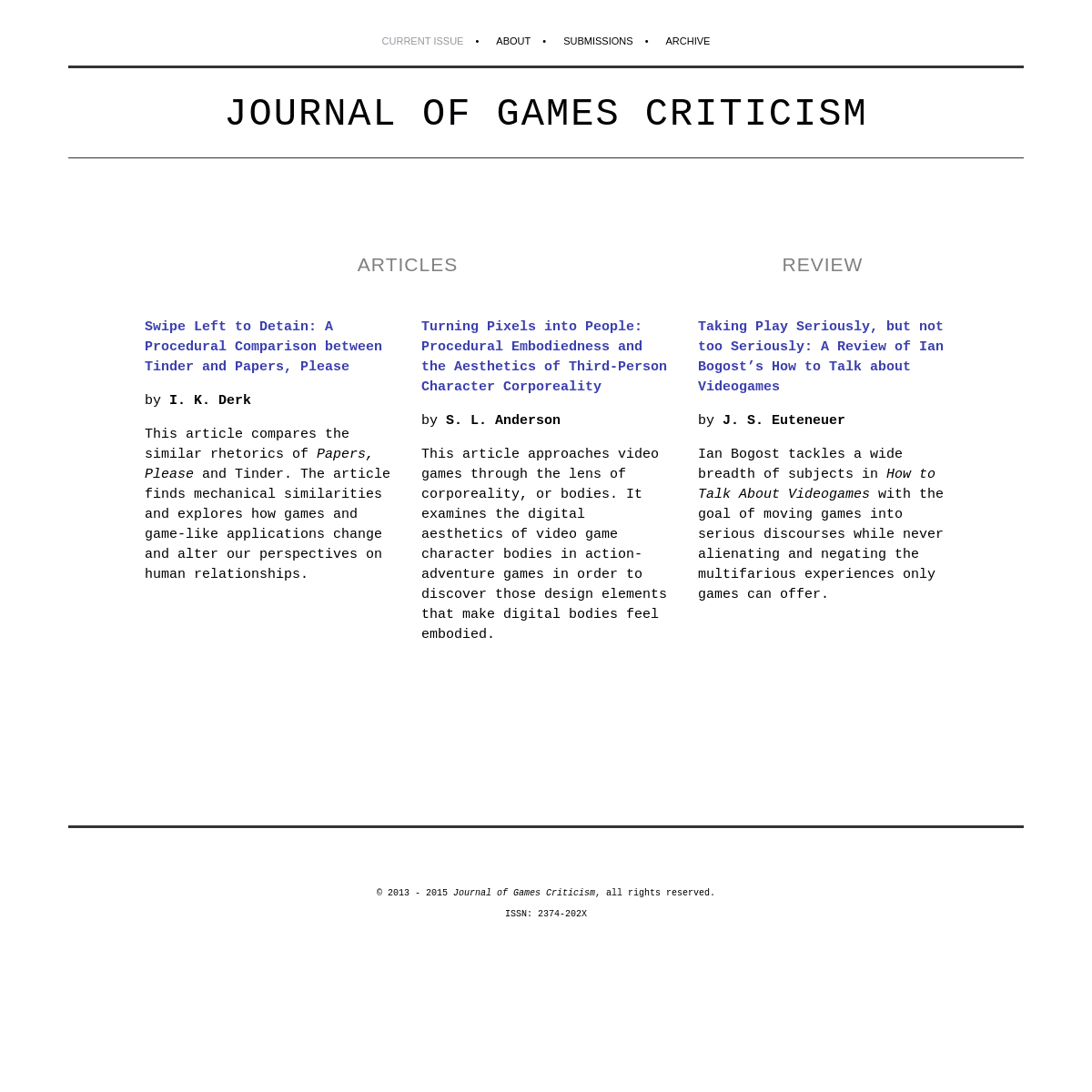Are you over 18 and want to see adult content?
More Annotations

A complete backup of https://mainetreasurechest.com
Are you over 18 and want to see adult content?

A complete backup of https://shejidaren.com
Are you over 18 and want to see adult content?

A complete backup of https://efsllc.com
Are you over 18 and want to see adult content?

A complete backup of https://createcultureco.com
Are you over 18 and want to see adult content?

A complete backup of https://vonzuhauseausgeldverdienen.de
Are you over 18 and want to see adult content?

A complete backup of https://aslsp.org
Are you over 18 and want to see adult content?

A complete backup of https://paisanospizza.com
Are you over 18 and want to see adult content?

A complete backup of https://alltheweb.co.za
Are you over 18 and want to see adult content?

A complete backup of https://hollycombe.co.uk
Are you over 18 and want to see adult content?

A complete backup of https://glos24.pl
Are you over 18 and want to see adult content?

A complete backup of https://youradio.cz
Are you over 18 and want to see adult content?

A complete backup of https://items.com
Are you over 18 and want to see adult content?
Favourite Annotations

A complete backup of https://bsfs.org
Are you over 18 and want to see adult content?

A complete backup of https://project-hobbit.eu
Are you over 18 and want to see adult content?

A complete backup of https://jeuxsoc.fr
Are you over 18 and want to see adult content?

A complete backup of https://clickx.io
Are you over 18 and want to see adult content?

A complete backup of https://lescrayeres.com
Are you over 18 and want to see adult content?

A complete backup of https://timesprime.com
Are you over 18 and want to see adult content?

A complete backup of https://thisblogrules.com
Are you over 18 and want to see adult content?

A complete backup of https://bird-in-hand.com
Are you over 18 and want to see adult content?

A complete backup of https://playingfor90.com
Are you over 18 and want to see adult content?

A complete backup of https://securityfirstflorida.com
Are you over 18 and want to see adult content?

A complete backup of https://blueheronhealthnews.com
Are you over 18 and want to see adult content?
Text
positivity.
CURRENT CALLS FOR PAPERS Abstracts of 300-500 words are due 31 March 2021 and should be sent to survivingwhiteness@gmail.com. We anticipate responding to abstracts by early April 2021. The expected due date for full paper submissions ( max. 8,000 words, excluding references) is mid July 2021, the anticipated publication date for double-anonymous peer-reviewed workwill
SUBMISSION GUIDELINES GAME CRITICISM AS TANGENTIAL LEARNING FACILITATOR BY R Video games have great potential to encourage tangential learning, but obstacles still exist. Enter explanatory game criticism, a critical structure that generates a springboard for tangential learners and offers them routes to continue their exploration using vetted sources. TOGETHER THEY ARE TWOFOLD BY A. WASZKIEWICZ “Together They Are Twofold”: Player-Avatar Relationship Beyond the Fourth Wall. by Agata Waszkiewicz. Abstract. Although breaking the fourth wall is one of the most common ways to achieve comic relief in films and TV series, some argue for its meaningful function as a technique enhancing the audience's informed experience of the text. UNDERSTANDING GAMES AND THE INDUSTRY THAT PRODUCES THEM BY In his chapter, “Video Games—A Subcultural Industry,” Mikolaj Dymek (2012) critiqued the “infinite expansion narrative” that says the video game industry has moved on from its more subcultural roots into a mass-cultural “casual revolution” with games for every type of player. He argued, instead, that “the video gameindustry is
BEYOND IDENTIFICATION BY L. PAPALE This is perfectly summarized in Laplanche and Pontalis’s (2006) definition of identification, that is “a psychological process whereby the subject assimilates an aspect, property, or attribute of the other and is transformed, wholly or partially, by the model the other provides” (p. 205). In rhetoric, identification was defined byBurke
FREUD’S UNCANNY, MASOCHISM, AND VIDEOGAMES BY K. AARDSE The Other Side of the Valley; Or, Between Freud and Videogames. by Kent Aardse. Abstract. The digital world breathes new life into psychoanalysis, as simulations achieved with new technology challenge our notions of self, identity, and representation, which are at the basis of Freud ’ s work in psychoanalysis. I will discuss some seminal theories of Sigmund Freud, such as the uncanny and DO YOU FEEL LIKE A HERO YET? BY M. J. HERON & P. H Given the restrictions of the technology at the time, Alter Ego is an interesting example for the sheer scope of the game; however, it is a largely deterministic experience. Some variation is given in that a few actions are impossible to pull off convincingly if you lack a certain value in your “personality,” but otherwise the story progresses largely the same way each time. YOU’RE JUST GONNA BE NICE BY A. LANGE My prediction is: all you guys, you’re just gonna be nice. Sickeningly, sycophantically nice to each other. And it makes me sick, because you know, in a game like Fable, we spent hours; we spent months, months and years crafting the evil side of Fable, and only ten percent of people actually did the evil side. Come on. JOURNAL OF GAMES CRITICISM by J. A. Keever. A critique of the play studies canon that asserts that autotelicity is an ideological construct which allows play to signify without being caught up in the structures of power that are inherent to signification. This is an argument against play’spositivity.
CURRENT CALLS FOR PAPERS Abstracts of 300-500 words are due 31 March 2021 and should be sent to survivingwhiteness@gmail.com. We anticipate responding to abstracts by early April 2021. The expected due date for full paper submissions ( max. 8,000 words, excluding references) is mid July 2021, the anticipated publication date for double-anonymous peer-reviewed workwill
SUBMISSION GUIDELINES GAME CRITICISM AS TANGENTIAL LEARNING FACILITATOR BY R Video games have great potential to encourage tangential learning, but obstacles still exist. Enter explanatory game criticism, a critical structure that generates a springboard for tangential learners and offers them routes to continue their exploration using vetted sources. TOGETHER THEY ARE TWOFOLD BY A. WASZKIEWICZ “Together They Are Twofold”: Player-Avatar Relationship Beyond the Fourth Wall. by Agata Waszkiewicz. Abstract. Although breaking the fourth wall is one of the most common ways to achieve comic relief in films and TV series, some argue for its meaningful function as a technique enhancing the audience's informed experience of the text. UNDERSTANDING GAMES AND THE INDUSTRY THAT PRODUCES THEM BY In his chapter, “Video Games—A Subcultural Industry,” Mikolaj Dymek (2012) critiqued the “infinite expansion narrative” that says the video game industry has moved on from its more subcultural roots into a mass-cultural “casual revolution” with games for every type of player. He argued, instead, that “the video gameindustry is
BEYOND IDENTIFICATION BY L. PAPALE This is perfectly summarized in Laplanche and Pontalis’s (2006) definition of identification, that is “a psychological process whereby the subject assimilates an aspect, property, or attribute of the other and is transformed, wholly or partially, by the model the other provides” (p. 205). In rhetoric, identification was defined byBurke
FREUD’S UNCANNY, MASOCHISM, AND VIDEOGAMES BY K. AARDSE The Other Side of the Valley; Or, Between Freud and Videogames. by Kent Aardse. Abstract. The digital world breathes new life into psychoanalysis, as simulations achieved with new technology challenge our notions of self, identity, and representation, which are at the basis of Freud ’ s work in psychoanalysis. I will discuss some seminal theories of Sigmund Freud, such as the uncanny and DO YOU FEEL LIKE A HERO YET? BY M. J. HERON & P. H Given the restrictions of the technology at the time, Alter Ego is an interesting example for the sheer scope of the game; however, it is a largely deterministic experience. Some variation is given in that a few actions are impossible to pull off convincingly if you lack a certain value in your “personality,” but otherwise the story progresses largely the same way each time. YOU’RE JUST GONNA BE NICE BY A. LANGE My prediction is: all you guys, you’re just gonna be nice. Sickeningly, sycophantically nice to each other. And it makes me sick, because you know, in a game like Fable, we spent hours; we spent months, months and years crafting the evil side of Fable, and only ten percent of people actually did the evil side. Come on.ABOUT THE JGC
The Journal of Games Criticism (JGC) is a non-profit, peer-reviewed, open-access journal which aims to respond to these cultural artifacts by extending the range of authors to include both traditional academics and popular bloggers. The journal strives to be a producer of feed-forward approaches to video games criticism with a focus on ARCHIVE: JOURNAL OF GAMES CRITICISM Welcome to the inaugural issue of our open access, peer reviewed journal. Drawing out the assumptions and ideals of the journal, this text serves as an introduction for the current and future issues of the Journal of Games Criticism. The Other Side of the Valley; Or, Between Freud and Videogames by K. Aardse. This paper explores theroot of the
TEMPLATES — JOURNAL OF GAMES CRITICISM The above template is JGC 's preferred format for article submissions. Following this template will save our managing editor and technical editor a lot of time when publishing your article. To use the template, just open the JGC-article-template.dotm file from the folder into which you have downloaded it. Please, before submitting, rememberto
UNDERSTANDING GAMES AND THE INDUSTRY THAT PRODUCES THEM BY In his chapter, “Video Games—A Subcultural Industry,” Mikolaj Dymek (2012) critiqued the “infinite expansion narrative” that says the video game industry has moved on from its more subcultural roots into a mass-cultural “casual revolution” with games for every type of player. He argued, instead, that “the video gameindustry is
RETROGAMING AS NOSTALGIA BY D. S. HEINEMAN by David S. Heineman. Abstract. This essay explores the success of retrogaming to show how new public memories about gaming history are being rhetorically constructed. It argues that recent arguments about this history function to reshape the identities of retrogamers and retrogaming communities. After explaining the relevance of publicmemory
EDITORIAL: STANDING ON THE HORIZON OF THE SECOND Editorial: Standing on the Horizon of the Second Generation. by Nicholas A. Hanford, editor-in-chief. On behalf of the editorial board of the Journal of Games Criticism, I would like to welcome you to the inaugural issue of this new peer-reviewed, open-access journal.This academic journal was born from a game studies reading group that took place over the summer of 2013, where the ideals of A COUNTERREVOLUTION IN THE HANDS BY D. PARISI A Counterrevolution in the Hands: The Console Controller as an Ergonomic Branding Mechanism. by David Parisi. Abstract. In this article, the author examines the tactile materiality of the videogame controller, reading its stability across multiple generations of game consoles as a strategy simultaneously intended (1) to maintain the ergonomic identification between the player/consumer and the A PROCEDURALIST VIEW ON DIVERSITY IN GAMES BY G. SMITH A Proceduralist View on Diversity in Games. by Gillian Smith. Abstract. The way in which information is represented to the machine, as well as how procedures use it, reveals biases during game development that influence the way in which players experience a game. REVIEW: JANE MCGONIGAL, REALITY IS BROKEN BY Q. JI Gaming for Better Life: A Review of Jane McGonigal’s Reality Is Broken. by Qihao Ji. Jane McGonigal. Reality Is Broken: Why Games Make Us Better and How They Can Change the World. New York: Penguin Books, 2011, 416 pp., ISBN NO.9781594202858. Jane McGonigal, a digital game designer who earned her Ph.D. in performance from the University of TURNING PIXELS INTO PEOPLE BY S. L. ANDERSON Turning Pixels into People: Procedural Embodiedness and the Aesthetics of Third-Person Character Corporeality. by Sky L. Anderson. Abstract. An aesthetic of corporeality pervades third-person action games—one of, if not the most popular—genres on video games. JOURNAL OF GAMES CRITICISM by J. A. Keever. A critique of the play studies canon that asserts that autotelicity is an ideological construct which allows play to signify without being caught up in the structures of power that are inherent to signification. This is an argument against play’spositivity.
ABOUT THE JGC
SUBMISSION GUIDELINES GAME CRITICISM AS TANGENTIAL LEARNING FACILITATOR BY R Video games have great potential to encourage tangential learning, but obstacles still exist. Enter explanatory game criticism, a critical structure that generates a springboard for tangential learners and offers them routes to continue their exploration using vetted sources. TOGETHER THEY ARE TWOFOLD BY A. WASZKIEWICZ “Together They Are Twofold”: Player-Avatar Relationship Beyond the Fourth Wall. by Agata Waszkiewicz. Abstract. Although breaking the fourth wall is one of the most common ways to achieve comic relief in films and TV series, some argue for its meaningful function as a technique enhancing the audience's informed experience of the text. UNDERSTANDING GAMES AND THE INDUSTRY THAT PRODUCES THEM BY In his chapter, “Video Games—A Subcultural Industry,” Mikolaj Dymek (2012) critiqued the “infinite expansion narrative” that says the video game industry has moved on from its more subcultural roots into a mass-cultural “casual revolution” with games for every type of player. He argued, instead, that “the video gameindustry is
BEYOND IDENTIFICATION BY L. PAPALE This is perfectly summarized in Laplanche and Pontalis’s (2006) definition of identification, that is “a psychological process whereby the subject assimilates an aspect, property, or attribute of the other and is transformed, wholly or partially, by the model the other provides” (p. 205). In rhetoric, identification was defined byBurke
DO YOU FEEL LIKE A HERO YET? BY M. J. HERON & P. H Given the restrictions of the technology at the time, Alter Ego is an interesting example for the sheer scope of the game; however, it is a largely deterministic experience. Some variation is given in that a few actions are impossible to pull off convincingly if you lack a certain value in your “personality,” but otherwise the story progresses largely the same way each time. PLAY WHILE PAUSED BY M. D. SCHMALZER by Madison Schmalzer. Abstract. Alexander Galloway (2006) argued that “to live today is to know how to use menus” (p. 17). This is especially true in videogames: To play videogames is to use menus. While menus proliferate in videogames, they are practically synonymous with the act of pausing, appearing whenever a game is suspended. FREUD’S UNCANNY, MASOCHISM, AND VIDEOGAMES BY K. AARDSE The Other Side of the Valley; Or, Between Freud and Videogames. by Kent Aardse. Abstract. The digital world breathes new life into psychoanalysis, as simulations achieved with new technology challenge our notions of self, identity, and representation, which are at the basis of Freud ’ s work in psychoanalysis. I will discuss some seminal theories of Sigmund Freud, such as the uncanny and JOURNAL OF GAMES CRITICISM by J. A. Keever. A critique of the play studies canon that asserts that autotelicity is an ideological construct which allows play to signify without being caught up in the structures of power that are inherent to signification. This is an argument against play’spositivity.
ABOUT THE JGC
SUBMISSION GUIDELINES GAME CRITICISM AS TANGENTIAL LEARNING FACILITATOR BY R Video games have great potential to encourage tangential learning, but obstacles still exist. Enter explanatory game criticism, a critical structure that generates a springboard for tangential learners and offers them routes to continue their exploration using vetted sources. TOGETHER THEY ARE TWOFOLD BY A. WASZKIEWICZ “Together They Are Twofold”: Player-Avatar Relationship Beyond the Fourth Wall. by Agata Waszkiewicz. Abstract. Although breaking the fourth wall is one of the most common ways to achieve comic relief in films and TV series, some argue for its meaningful function as a technique enhancing the audience's informed experience of the text. UNDERSTANDING GAMES AND THE INDUSTRY THAT PRODUCES THEM BY In his chapter, “Video Games—A Subcultural Industry,” Mikolaj Dymek (2012) critiqued the “infinite expansion narrative” that says the video game industry has moved on from its more subcultural roots into a mass-cultural “casual revolution” with games for every type of player. He argued, instead, that “the video gameindustry is
BEYOND IDENTIFICATION BY L. PAPALE This is perfectly summarized in Laplanche and Pontalis’s (2006) definition of identification, that is “a psychological process whereby the subject assimilates an aspect, property, or attribute of the other and is transformed, wholly or partially, by the model the other provides” (p. 205). In rhetoric, identification was defined byBurke
DO YOU FEEL LIKE A HERO YET? BY M. J. HERON & P. H Given the restrictions of the technology at the time, Alter Ego is an interesting example for the sheer scope of the game; however, it is a largely deterministic experience. Some variation is given in that a few actions are impossible to pull off convincingly if you lack a certain value in your “personality,” but otherwise the story progresses largely the same way each time. PLAY WHILE PAUSED BY M. D. SCHMALZER by Madison Schmalzer. Abstract. Alexander Galloway (2006) argued that “to live today is to know how to use menus” (p. 17). This is especially true in videogames: To play videogames is to use menus. While menus proliferate in videogames, they are practically synonymous with the act of pausing, appearing whenever a game is suspended. FREUD’S UNCANNY, MASOCHISM, AND VIDEOGAMES BY K. AARDSE The Other Side of the Valley; Or, Between Freud and Videogames. by Kent Aardse. Abstract. The digital world breathes new life into psychoanalysis, as simulations achieved with new technology challenge our notions of self, identity, and representation, which are at the basis of Freud ’ s work in psychoanalysis. I will discuss some seminal theories of Sigmund Freud, such as the uncanny andABOUT THE JGC
The Journal of Games Criticism (JGC) is a non-profit, peer-reviewed, open-access journal which aims to respond to these cultural artifacts by extending the range of authors to include both traditional academics and popular bloggers. The journal strives to be a producer of feed-forward approaches to video games criticism with a focus on ARCHIVE: JOURNAL OF GAMES CRITICISM Welcome to the inaugural issue of our open access, peer reviewed journal. Drawing out the assumptions and ideals of the journal, this text serves as an introduction for the current and future issues of the Journal of Games Criticism. The Other Side of the Valley; Or, Between Freud and Videogames by K. Aardse. This paper explores theroot of the
UNDERSTANDING GAMES AND THE INDUSTRY THAT PRODUCES THEM BY In his chapter, “Video Games—A Subcultural Industry,” Mikolaj Dymek (2012) critiqued the “infinite expansion narrative” that says the video game industry has moved on from its more subcultural roots into a mass-cultural “casual revolution” with games for every type of player. He argued, instead, that “the video gameindustry is
A PROCEDURALIST VIEW ON DIVERSITY IN GAMES BY G. SMITH A Proceduralist View on Diversity in Games. by Gillian Smith. Abstract. The way in which information is represented to the machine, as well as how procedures use it, reveals biases during game development that influence the way in which players experience a game. EDITORIAL: STANDING ON THE HORIZON OF THE SECOND Editorial: Standing on the Horizon of the Second Generation. by Nicholas A. Hanford, editor-in-chief. On behalf of the editorial board of the Journal of Games Criticism, I would like to welcome you to the inaugural issue of this new peer-reviewed, open-access journal.This academic journal was born from a game studies reading group that took place over the summer of 2013, where the ideals of OF ACTORS AND NON-PLAYER CHARACTERS BY I. B. FAITH Of Actors and Non-Player Characters: How Immersive Theatre Performances Decontextualize Game Mechanics. by Ian B. Faith. Abstract. This essay argues that video game design informs the genre of immersive theatre both in its conception and in the ways participants interact with RETROGAMING AS NOSTALGIA BY D. S. HEINEMAN by David S. Heineman. Abstract. This essay explores the success of retrogaming to show how new public memories about gaming history are being rhetorically constructed. It argues that recent arguments about this history function to reshape the identities of retrogamers and retrogaming communities. After explaining the relevance of publicmemory
REVIEW: JANE MCGONIGAL, REALITY IS BROKEN BY Q. JI Gaming for Better Life: A Review of Jane McGonigal’s Reality Is Broken. by Qihao Ji. Jane McGonigal. Reality Is Broken: Why Games Make Us Better and How They Can Change the World. New York: Penguin Books, 2011, 416 pp., ISBN NO.9781594202858. Jane McGonigal, a digital game designer who earned her Ph.D. in performance from the University of IMPERIALISM IN THE WORLDS AND MECHANICS OF FIRST-PERSON by Ansh Patel. First-person shooters (FPSs) evoke a power fantasy that empowers players with both agency and choice, while problematically reproducing various aspects of imperialism. Specifically, players develop a “heroic” narrative by exploring and conquering game spaces and neutralizing “savage, hostile” enemies. ASSESSING MASS EFFECT 2 AND ELDER SCROLLS V: SKYRIM BY L Assessing Mass Effect 2 and Elder Scrolls V: Skyrim: Using Collaborative Criteria for Player Agency in Interactive Narratives. by Lindsey Joyce. Abstract. The central argument in the ludology versus narratology debate is that the relationship between narrative and agency is fundamentally in tension.Search
* Current Issue
* About
* Submissions
* Archive
Close Menu
Search
Close
* Current Issue
* About
* Submissions
* Archive
Menu
JOURNAL OF GAMES CRITICISMARTICLES
REVIEW
SWIPE LEFT TO DETAIN: A PROCEDURAL COMPARISON BETWEEN TINDER ANDPAPERS, PLEASE
by I. K. DERK
This article compares the similar rhetorics of _Papers, Please_ and Tinder. The article finds mechanical similarities and explores how games and game-like applications change and alter our perspectives on human relationships. TURNING PIXELS INTO PEOPLE: PROCEDURAL EMBODIEDNESS AND THE AESTHETICS OF THIRD-PERSON CHARACTER CORPOREALITYby S. L. ANDERSON
This article approaches video games through the lens of corporeality, or bodies. It examines the digital aesthetics of video game character bodies in action-adventure games in order to discover those design elements that make digital bodies feel embodied. TAKING PLAY SERIOUSLY, BUT NOT TOO SERIOUSLY: A REVIEW OF IAN BOGOST’S HOW TO TALK ABOUT VIDEOGAMESby J. S. EUTENEUER
Ian Bogost tackles a wide breadth of subjects in _How to Talk About Videogames_ with the goal of moving games into serious discourses while never alienating and negating the multifarious experiences onlygames can offer.
0 items $0
� 2013 - 2015 _Journal of Games Criticism_, all rights reserved.ISSN: 2374-202X
Details
Copyright © 2024 ArchiveBay.com. All rights reserved. Terms of Use | Privacy Policy | DMCA | 2021 | Feedback | Advertising | RSS 2.0

